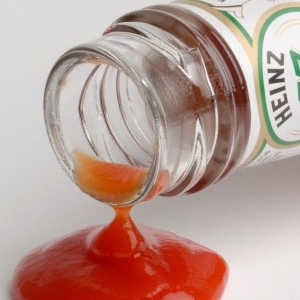We’ve been hearing for a few years, now, from innovative manufacturers and folks who package food, that new, sustainable packaging, with zero or near-zero impact on the environment, is just around the corner. Yet, there’s been no major shift away from demon plastic…

A week ago in this space, we looked into the initiatives, by a number of California municipalities, to ban natural gas appliances in hopes of cutting ozone-eating emissions. There are many views on the subject, from envrironmentalists crowing a victory, to restaurateurs crying foul over loss of what they consider an essential tool.
Asian restos, particularly, say they’ll be forced out of business, or have to compromise their culinary traditions and cultural identities if they can’t use gas-fired burners to heat their woks to the temperatures they need to produce authentic Asian dishes.
No, electric stoves just can’t safely produce temperatures of 500+ F, especially over long periods of continual cooking. And those in the know will quickly point out that the open flames help give many Asian dishes their unique characters.
My take was that – taken as a fraction of the total annual fossil fuel emissions of California, restaurant gas stoves are responsible for only a vanishingly small share of the problem. It’s still cars and trucks that contribute the most emissions, and and the state relies on natural gas-fired power generating plants for about 37 percent of its electricity. Why not just give the restos an exemption to the natural gas ban and concentrate more on eliminating the gas-fired power plants?
The moral: Seems there’s always another, darker side to the coin.
Packaging faces similar challenges
Why not glass, you say? Glass was the darling of food packagers before plastic came into widespread use. Glass was directly recyclable just by melting it down and making it into new containers. It was clear, so you could see what was inside. It was heat-sterilizable and hermetically sealable to ensure food safety. Alas, glass was also heavy and expensive to ship, and prone to breakage which ruined the contents and could injure the consumer. And it took a lot of energy to melt that glass and blow it into the moulds.
Plastic you already know about. Made from (once abundant and cheap) petrochemicals and light in weight, it can be made clear if you want. But not all the types are not all recyclable, requires more complex reprocessing than glass and requires a lot of energy manufacture and re-manufacture. And perhaps the biggest drawback: it’s not biodegradable. Given the opportunity to submit their empty plastic containers for recycling, the vast majority of folks just throw them away, causing problems of almost unimaginable magnitude in our landfills and oceans.
How about paper?
My first reaction was, “but paper can’t be used for liquids!” It’ll just get soggy and leak. And it can’t be sealed well enough to meet food safety standards. Not to mention the energy costs and chemical processes required to manufacture and re-manufacture pulp containers. And, given the proven predisposition of users to just toss empty containers, rather than put them in the recycle bin, what sort of biodegradability profile are we looking at? I’ll never forget the article I read in Scientific American years ago, that showed photos of bundles of 100-year-old newspapers from a landfill which were still largely intact and readable.
A workable though imperfect solution?
Given the shaky history of sustainable food packaging ‘breakthroughs’, I was intrigued by the announcement that Heinz has been collaborating with a new materials company called Pulpex, developing what the partners say is a truly sustainable, environmentally friendly ketchup bottle – made of paper.
The Kraft/Heinz news release states: “For The Kraft Heinz Company […], this collaboration is the latest step in its journey to reduce its environmental footprint. It progresses the Company’s sustainable packaging ambitions, in that it aligns with its goal to make all packaging globally recyclable, reusable or compostable by 2025. It is also an innovation that will help Kraft Heinz achieve net zero greenhouse gas emissions by 2050.”
Overall, Pulpex claims, “the carbon footprint of Pulpex bottles is materially less than glass and plastic on a bottle-by-bottle basis.”
A laudable ambition.
My take
How do they make their paper containers mush- and tear-resistant? I’m skeptical.
What do they use to line their bottles (presuming they have to do that to meet food safety standards)? Not to mention keeping stray fibres out of the food.
What if any off flavours and/or colours might Pulpex bottles leach into the food packed in it?
What about the bottle caps? Are they also pulp-based? What about the threaded necks of the bottles? Can they mate properly with the tops to achieve a safe, mechanically robust seal?
I also wonder whether the shelf life of Pulpex-bottled beverages and condiments can compare to glass or plastic?
And on the environmental angle: the carbon footprint to process pulp may be small compared to glass or plastic. But it takes a huge amount of fresh, clean water and a bunch of chemicals to make any kind of paper. What will the environmental crusaders say about that?
Muse on that…
~ Maggie J.

